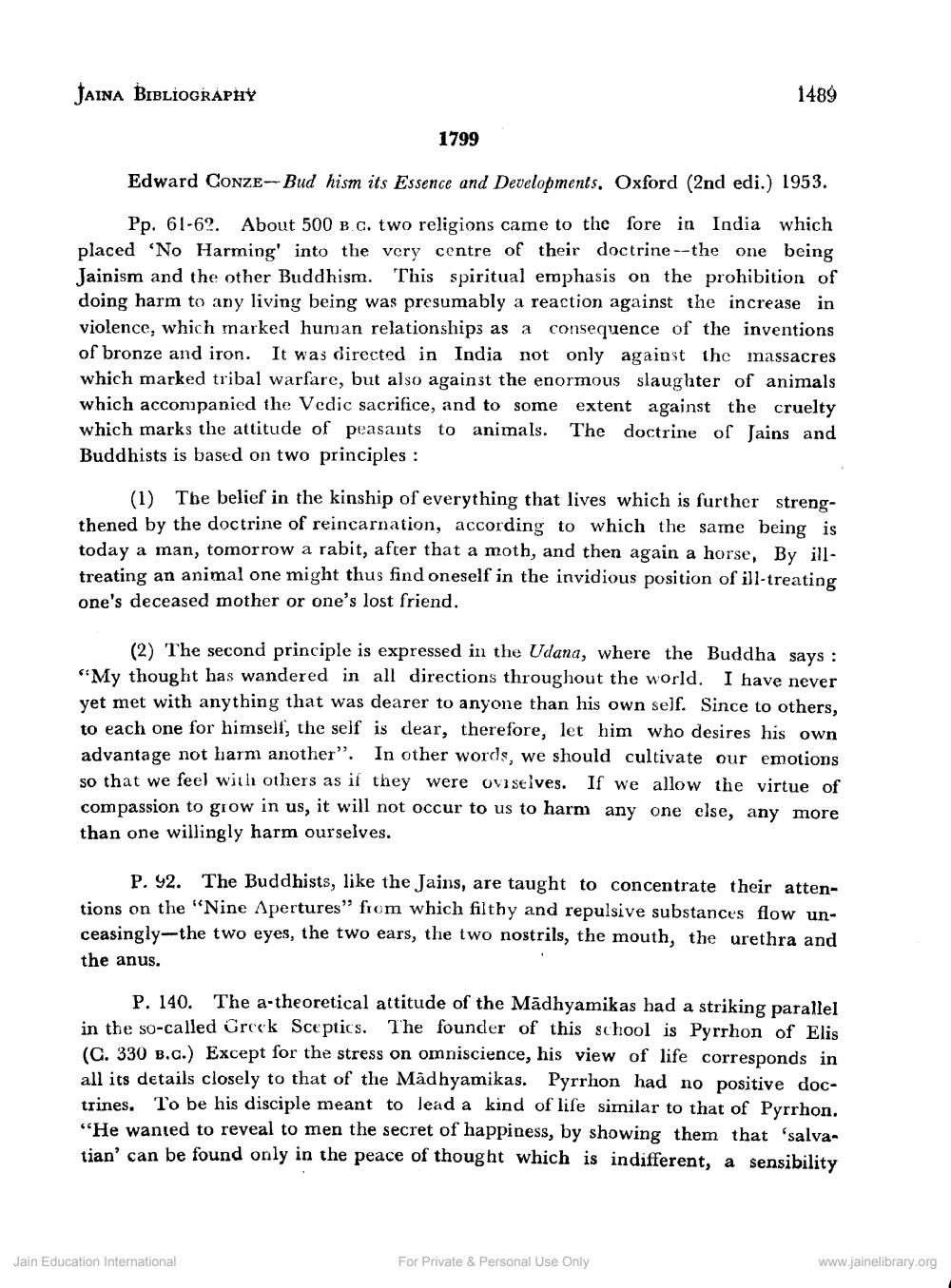________________
JAINA BIBLIOGRAPHY
1799
Edward CONZE-Bud hism its Essence and Developments. Oxford (2nd edi.) 1953.
Pp. 61-62. About 500 B. C. two religions came to the fore in India which placed 'No Harming' into the very centre of their doctrine--the one being Jainism and the other Buddhism. This spiritual emphasis on the prohibition of doing harm to any living being was presumably a reaction against the increase in violence, which marked human relationships as a consequence of the inventions. of bronze and iron. It was directed in India not only against the massacres which marked tribal warfare, but also against the enormous slaughter of animals. which accompanied the Vedic sacrifice, and to some extent against the cruelty which marks the attitude of peasants to animals. The doctrine of Jains and Buddhists is based on two principles:
1489
(1) The belief in the kinship of everything that lives which is further strengthened by the doctrine of reincarnation, according to which the same being is today a man, tomorrow a rabit, after that a moth, and then again a horse, By illtreating an animal one might thus find oneself in the invidious position of ill-treating one's deceased mother or one's lost friend.
(2) The second principle is expressed in the Udana, where the Buddha says: "My thought has wandered in all directions throughout the world. I have never yet met with anything that was dearer to anyone than his own self. Since to others, to each one for himself, the self is dear, therefore, let him who desires his own advantage not harm another". In other words, we should cultivate our emotions so that we feel with others as if they were oviselves. If we allow the virtue of compassion to grow in us, it will not occur to us to harm any one else, any more than one willingly harm ourselves.
P. 92. The Buddhists, like the Jains, are taught to concentrate their attentions on the "Nine Apertures" from which filthy and repulsive substances flow unceasingly-the two eyes, the two ears, the two nostrils, the mouth, the urethra and
the anus.
Jain Education International
P. 140. The a-theoretical attitude of the Madhyamikas had a striking parallel in the so-called Greek Sceptics. The founder of this school is Pyrrhon of Elis (C. 330 B.G.) Except for the stress on omniscience, his view of life corresponds in all its details closely to that of the Madhyamikas. Pyrrhon had no positive doctrines. To be his disciple meant to lead a kind of life similar to that of Pyrrhon. "He wanted to reveal to men the secret of happiness, by showing them that 'salvatian' can be found only in the peace of thought which is indifferent, a sensibility
For Private & Personal Use Only
www.jainelibrary.org




